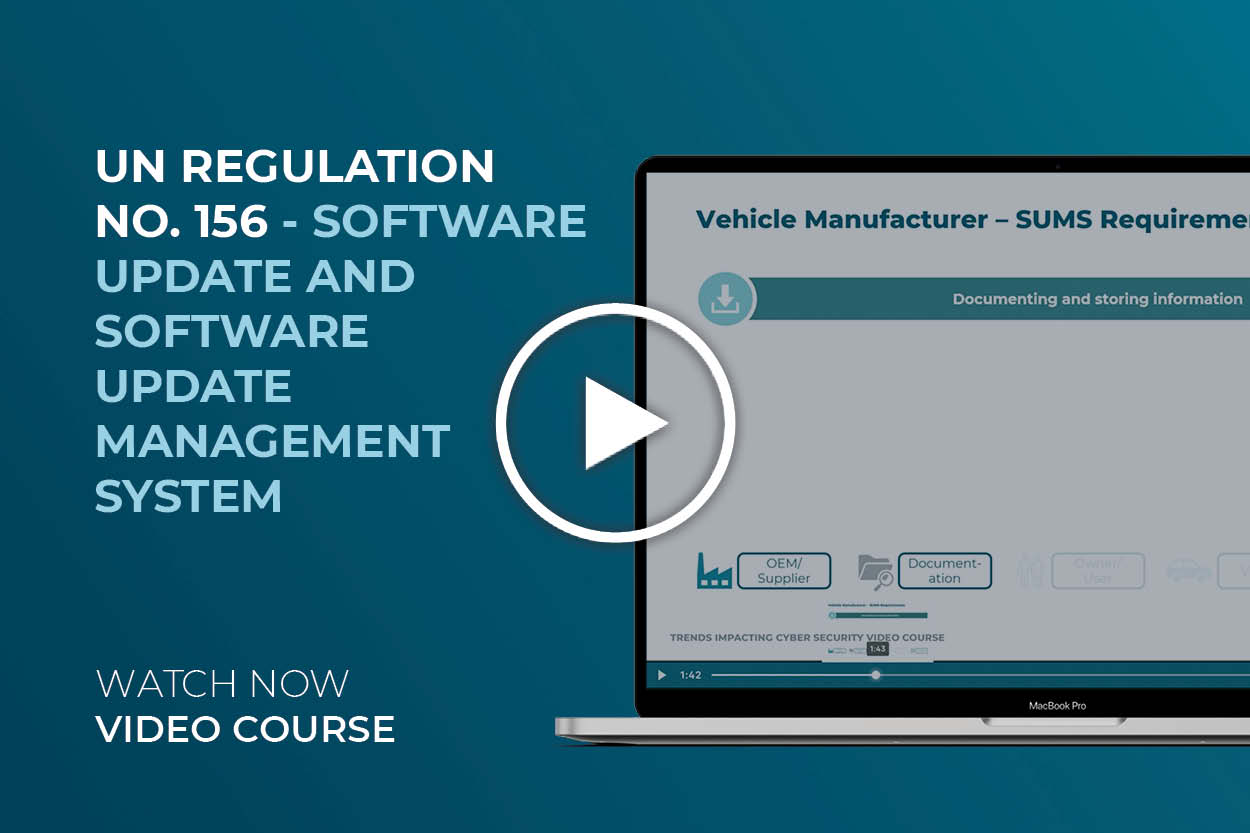Un Regulation 156 : What it is
UN Regulation No 156: What it is
The UN Regulation No 156, also known as UN R156, is a set of regulations that governs automotive software updates. These regulations ensure the safety, security, and reliability of software updates in vehicles, taking into account the increasing complexity and connectivity of modern automobiles.
Why UN Regulation No 156 is Important
Automotive software updates have become essential in today's technology-driven automobiles. These updates, commonly referred to as over-the-air (OTA) updates, enable automakers to fix bugs, enhance features, and address potential vulnerabilities remotely, without the need for car owners to visit service centers physically. UN Regulation No 156 sets out guidelines and requirements that manufacturers must adhere to when implementing software updates to ensure the safety and security of vehicle systems.
Key Features of UN Regulation No 156
The UN Regulation No 156 encompasses various key features, which are essential to understand in order to comply with the regulations. These features include:
1. Safety Measures
The regulation emphasizes the implementation of robust safety measures during the software update process. This includes conducting thorough testing and verification to ensure that the updates do not introduce any new vulnerabilities or compromise the existing safety-critical functionalities of the vehicle. Automakers must also have appropriate fail-safe mechanisms in place to handle any unforeseen issues that may arise during the update process.
2. Cybersecurity Requirements
UN Regulation No 156 recognizes the importance of cybersecurity in modern vehicles. It requires automakers to implement strong security measures to protect against potential cyber threats. This includes encrypting software updates, ensuring secure communication channels, and adopting industry-standard security practices to prevent unauthorized access and manipulation of vehicle systems.
3. Data Protection and Privacy
The regulation also addresses the critical aspect of data protection and privacy. It mandates that automakers must obtain explicit consent from vehicle owners before collecting, processing, or transmitting any personal data during software updates. Additionally, manufacturers must have robust data protection mechanisms in place to prevent unauthorized access, data breaches, and misuse of personal information.
FAQs about UN Regulation No 156
Q1: What types of vehicles does UN Regulation No 156 apply to?
UN Regulation No 156 applies to all categories of motor vehicles, including passenger cars, commercial vehicles, and motorcycles. The regulation does not discriminate based on vehicle type, as software updates are crucial for ensuring the safety and performance of all vehicles on the road.
Q2: Is compliance with UN Regulation No 156 mandatory for all automakers?
The UN Regulation No 156 is not yet mandatory for all countries. However, it is gradually being adopted by many countries as part of their national legislation. Compliance with these regulations demonstrates a commitment to safety, security, and customer satisfaction, positioning automakers as industry leaders in providing reliable and secure software updates.
Q3: How can automakers ensure compliance with UN Regulation No 156?
To ensure compliance with UN Regulation No 156, automakers should establish robust software development and update processes. This includes conducting rigorous testing and verification, adhering to cybersecurity best practices, and implementing transparent data protection measures. Collaborating with reputable third-party auditors and certification bodies, such as TÜV SÜD, can also help automakers validate their compliance and gain customers' trust.
And so, automotive software updates regulated by UN Regulation No 156 have revolutionized the way vehicles receive updates. This article only scratches the surface of the many intricacies of these regulations. As technology progresses and vehicles become increasingly connected and automated, it is vital to prioritize safety and security in software updates to ensure a smooth and secure driving experience for all vehicle owners.UN Regulation No 156 Info Webcast + Video Course (new)
 Image Source : www.cyres-consulting.com
Image Source : www.cyres-consulting.com UN Regulation No 156 Info Webcast + Video Course (new)
 Image Source : www.cyres-consulting.com
Image Source : www.cyres-consulting.com UN Regulation 156 Assessments - Automotive Expert Software Updates
 Image Source : www.tuvsud.com
Image Source : www.tuvsud.com UN Regulation No 156 & SUMS Info-Webcast [Video-Recording]
![UN Regulation No 156 & SUMS Info-Webcast [Video-Recording]](https://elopage-storage-production.s3.eu-central-1.amazonaws.com/variants/oKydSPnjWQLjVShikGnGwJWc/d508b20ed2aead6dd1793323b66b7fa7e9666e6438a9dd788afad43d25251d21) Image Source : learn.cyres-consulting.com
Image Source : learn.cyres-consulting.com A Beginners' Guide To UN Regulation No 156 (UNECE) - Video Course
 Image Source : www.cyres-consulting.com
Image Source : www.cyres-consulting.com UN Regulation No. 156 Video Course
 Image Source : learn.cyres-consulting.com
Image Source : learn.cyres-consulting.com UN Regulation No 156 Info Webcast + Video Course (new)
 Image Source : www.cyres-consulting.com
Image Source : www.cyres-consulting.com UN Regulation 156 Assessments - Automotive Software Updates | TÜV SÜD
 Image Source : www.tuvsud.com
Image Source : www.tuvsud.com Un regulation no 156 info webcast + video course (new). Un regulation no 156 info webcast + video course (new). Un regulation 156 assessments. Un regulation no 156 info webcast + video course (new). Un regulation 156 assessments